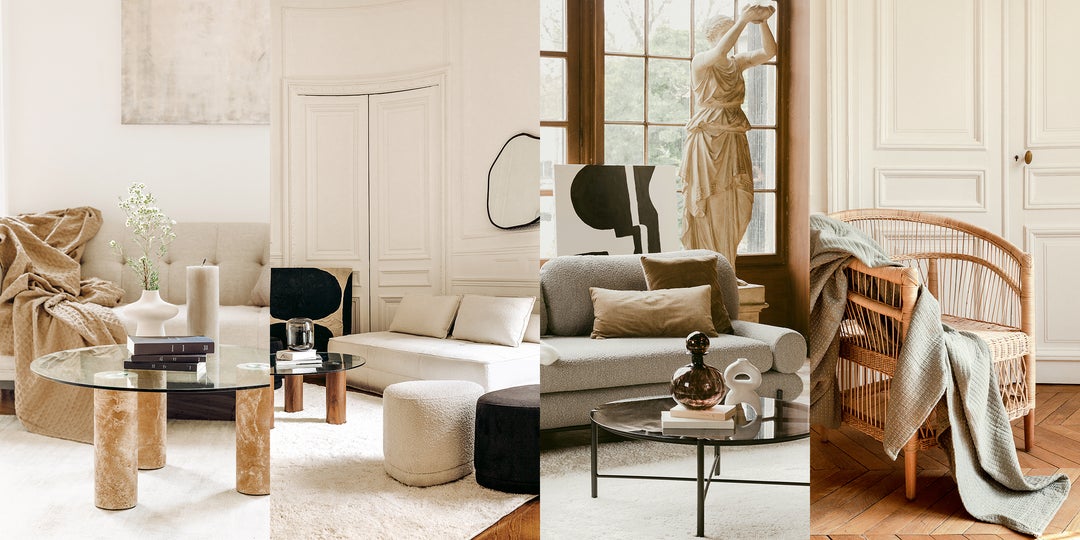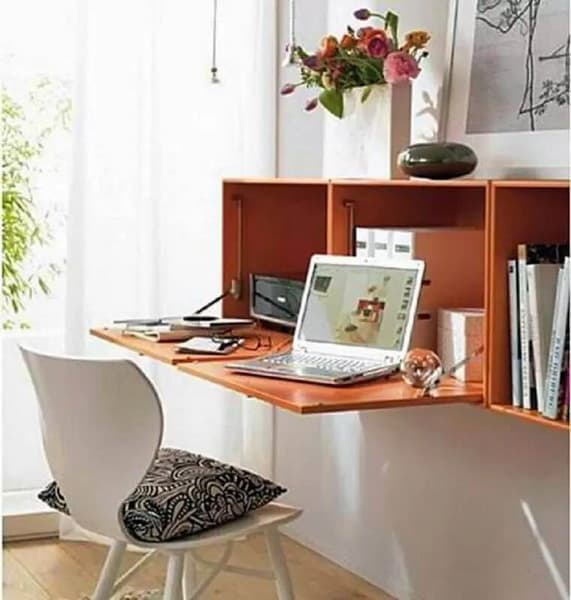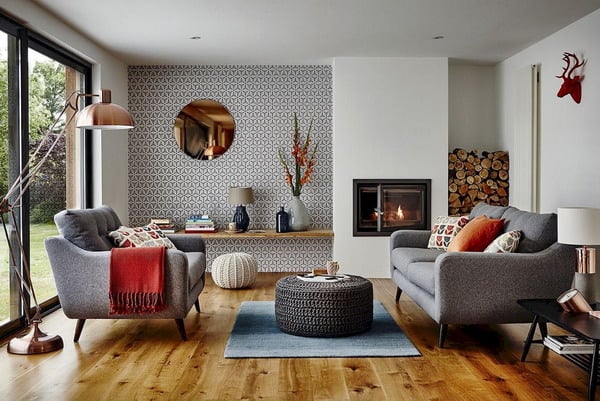10 new interior design styles you should definitely try in 2025
Do you want to give your house a new look in 2025? There are so many different interior design styles that it can be difficult at first to decide which one suits you best. We have put together 10 interior design styles that you should definitely try out in your home in 2025!
#1 – That Retro-Chic Style
Retro chic interior design involves bringing vintage elements into a modern space to create a unique and elegant atmosphere. This design style is perfect for anyone who loves the nostalgia of decades past but still wants a fresh, contemporary look in their home.
One way to incorporate retro chic into your home is to use vintage furniture and decor pieces. These can include items such as mid-century modern chairs, retro lamps and vintage rugs. These pieces can be mixed with more modern elements to create a balance between old and new. Another way to achieve a retro-chic look is to use bold and bold colors and patterns. Think geometric prints, bright flowers and primary colors. These elements can appear in wallpaper, pillows and other decorative elements.
Texture is also an important aspect of retro-chic interior design. Incorporating textured elements like long-pile rugs, velor upholstery fabrics, and knit throws can add depth and appeal to a room. When it comes to lighting, opt for striking pieces such as arc lamps or chandeliers with a vintage look. These add a touch of glamor and drama to your room.
#2 – The Mid-Century Style
The Mid-Century style is a design movement that emerged in the 1940s and grew in popularity in the 1950s and 1960s. It is characterized by clean lines, minimal decorations and a focus on the functionality of furniture and decorative elements.
One of the characteristics of mid-century design is the use of organic and geometric shapes. Furniture and furnishings often have curved or angular lines, and materials such as wood, glass and metal are used in their construction. Natural materials and earthy colors are also common in mid-century interiors, with the color palette often including shades of green, brown and orange. Mid-century design also focuses on simplicity and functionality. The furniture is mostly designed to be practical and efficient, with an emphasis on comfort and ergonomics. Storage solutions are often built-in or hidden, with the goal being to create a decluttered space limited to the essentials.
If you’re thinking about bringing mid-century style into your home, there are a few key elements to keep in mind. First, start by choosing a few statement pieces, like a mid-century sofa or dining table. Then add geometric patterns and textiles, like a pillow or rug, to the room to add visual interest. Finally, don’t be afraid to mix and match different materials and textures, as this is considered an essential aspect of mid-century design. Overall, the mid-century interior design style is a classic and timeless choice that can add a sense of sophistication and warmth to any home. Whether you’re planning this style for your entire home or just want to add a few key pieces, the mid-century style will add a touch of timeless appeal to your home.
#3 – That modern style
The modern furnishing style is primarily determined by a clear and minimal aesthetic . He draws inspiration from the latest trends in architecture, art and design and focuses on functionality and simplicity.
One of the key elements of modern interior design is the use of clean lines and a simple look. This means that furniture with simple, geometric shapes is used and an excess of decoration and accessories is avoided. Modern interiors are often characterized by an open floor plan, plenty of natural light, and the use of natural materials such as wood, metal, and stone. Colors also play an important role in modern interior design. While neutral colors like white, black, and gray are a common choice, bright colors can also be incorporated to add more visual interest and depth to the room.
In addition to aesthetics, modern interior design also focuses on sustainability and environmental friendliness . This means that you should use environmentally friendly materials and products, e.g. B. reclaimed wood or energy-saving household appliances. Overall, modern interior design is about creating a functional, visually appealing and long-lasting space. By using clean lines, natural materials and bright colors, you can create a modern and elegant interior that reflects your personal taste and lifestyle. Also discover our interview about our upcycling project .
#4 – The Traditional Style
The traditional interior design style is a classic and timeless approach to interior design that has been popular for centuries. It is characterized by the use of elegant and traditional furniture and decorative elements such as: B. antique pieces, sophisticated fabrics and intricate details.
One of the key elements of traditional interior design is its symmetry. It’s about the balance and arrangement of objects in a space. Traditional interiors often feature a symmetrical arrangement of furniture, with matching pairs of sofas , chairs , or tables on each side of the room . Luxurious fabrics and materials are also often found in traditional interior design. Rich velvets, silks and brocades are common choices for upholstery, curtains and other furniture pieces. These fabrics give the room a feeling of opulence and sophistication.
In addition to elegant furniture, traditional interiors often contain a number of decorative elements such as ornate moldings, carved wood details and complex patterns. These details add depth and accents to the room and can be incorporated in the form of wallpaper, carpets and other decorative accessories. Traditional interior design style is all about creating a classic and timeless look that exudes elegance and sophistication. The perfect style for those who appreciate the finer things in life and want to create a truly luxurious and cozy home.
#5 – The Scandinavian style
The Scandinavian interior design style is a popular and ongoing trend that emerged in the five Nordic countries of Denmark, Finland, Iceland, Norway and Sweden. Characterized by simplicity, functionality and an emphasis on natural materials, Scandinavian style celebrates the beauty of the natural world and promotes a sense of calm and serenity in the home.
At the heart of Scandinavian design is a minimalist aesthetic , emphasizing clean lines, uncluttered spaces, and a neutral color palette. Natural materials such as wood, wool and linen are used to create a feeling of warmth and comfort, while accessories and artwork add pops of color. One of the key principles of Scandinavian design is functionality. Every element in a room must serve a purpose, and furniture is selected for its utility and aesthetic appeal. This functional approach also applies to lighting, favoring natural light and the use of simple, functional fixtures.
Scandinavian design is also heavily influenced by the natural environment, incorporating elements such as houseplants and natural wood surfaces to bring elements of nature into a home. This connection to nature helps create a feeling of harmony and balance in the space. Scandinavian interior design is about creating a simple, functional and calming space that celebrates the facets of the natural world. By using natural materials and focusing on minimalist aesthetics and functionality, you can bring the beautiful and enduring style of Scandinavian design into your own home.
#6 – The industrial style
Industrial interior design thrives on a raw and utilitarian aesthetic inspired by warehouses and factories. This style combines elements of raw materials, exposed pipes and pipes, and places an emphasis on functionality to create a rugged, urban look . This design style is perfect for those looking to add a bold side to their space and works well in both residential and commercial environments.
One of the main features of industrial interior design is the use of untreated materials. This includes elements such as concrete, brick and metal that are left exposed and visible rather than covered with drywall or plaster. These materials give the room a raw, unfinished look and help create a sense of authenticity and history. Another feature is exposed pipes and fittings. These elements are also typically left visible rather than hidden behind walls or ceilings, increasing the utility of the space. Because not only are they functional, but they can also add visual interest to the room.
Functionality is also a key element of industrial interior design here. This style focuses on practicality and efficiency, so furniture and decoration should be selected with these elements in mind. This means you should choose pieces that are durable and long-lasting, as well as those that serve a specific purpose. If you want to give your space an industrial interior design, there are a few key elements to keep in mind. First of all, you should always prefer using untreated materials such as concrete, brick and metal. These elements will help create the rugged, industrial look you’re going for. Next, consider adding exposed pipes and plumbing to the room. These elements can be both functional and serve as an eye-catcher in the room. Finally, choose furniture and decorative elements that are practical, efficient and will stand the test of time. With these tips in mind, you can create an industrial-inspired space that is both elegant and functional.
#7 – The rustic style
The rustic interior design style is a popular and timeless choice for those who want to bring a sense of warmth and natural beauty into their home. This style is characterized by the use of natural materials such as wood, stone and metal as well as earthy colors and textures.
One of the key elements of rustic interior design is the use of raw, unfinished materials. This includes raw wooden beams, exposed brick walls and natural stone surfaces. These materials add character and depth to a space and help create a sense of history and connection to the natural world. In addition to natural materials, earthy colors such as brown, green and beige are often used in rustic design. These colors create a cozy and inviting atmosphere and can be combined with lighter colors for a more modern touch.
Another key aspect of rustic design is the use of vintage and antique elements. These pieces add a sense of history and authenticity to a space and can help create a sense of warmth and familiarity. In addition, the rustic design style also stands for comfort and functionality. It’s often about practical elements such as exposed storage, comfortable seating and multi-purpose furniture. Rustic interior design is a style that aims to bring the warmth and beauty of the outside into the interior spaces. Choose this style if you want an inviting and cozy atmosphere for your home.
#8 – The Eclectic Style
The eclectic interior design style combines various elements from different design styles to create a unique and personal space. It’s a great way to highlight your personality and personal interests through the design of your home.
One of the key elements of eclectic design is that it does not follow any specific rules or guidelines. Instead, this style gives you the chance to mix and match different pieces and styles to create a unified look. This can include combining vintage and modern furniture, using patterns and bold colors, and incorporating a variety of textures and materials. One way to achieve an eclectic look is to start with a neutral base, such as: B. a white or neutral-colored wall, and then add colorful and more eye-catching accents through accessories, artwork and furniture. This allows you to quickly transform your rooms and change the look of your home without having to redesign the entire design.
Another important aspect of eclectic design is furnishing your space with pieces that have meaning and meaning to you. These can be family heirlooms, vintage finds and works of art – anything that has personal value to you. These significant pieces add depth and character to your space, making it truly unique and special. If you want to bring the eclectic interior design style into your home, it is important to first have a clear idea of what you want to achieve. To start, get inspiration from magazines, Pinterest and design blogs and then start experimenting with different rooms and combinations. Remember: The beauty of eclectic design is that there are no hard and fast rules – just have fun and incorporate your personal style.
#9 – The Boho Style
Bohemian style interior design, also known as Boho style or Bohemian style, is a unique and eclectic mix of colorful, bold and artistic elements. It’s a style that celebrates creativity, individuality and freedom of expression, and it’s perfect for those who want to create a home that reflects their personality and style.
One of the main features of boho design is the use of bright and bold colors. This is expressed in the use of colorful patterns and textiles, such as: B. colorful cushions, carpets and curtains. It’s also about mixing different textures and materials such as wicker, wood and metal to create a layered and tactile look. The use of flowers and green plants is also ideal for this. Boho-style rooms often feature a mix of houseplants such as ferns and similar plants that bring in a touch of nature and bring the room to life. Boho design is also known for utilizing global and cultural influences. This is evident in the use of unique and exotic decorative elements such as Moroccan lanterns, Indian tapestries and African masks.
One of the most interesting aspects of boho design is that you can mix and match different styles and elements to create a truly unique space that completely reflects your personal style. Whether you’re a fan of bold patterns, colorful textiles or global influences, boho design is the perfect way to express your creativity and create a home that’s just right for you.
#10 – The Coastal Style
A coastal-style interior is ideal for people who want to bring a relaxed beach atmosphere into their living spaces. This style is inspired by colors, textures and natural elements found in coastal environments, such as the ocean, sandy beaches and seashells.
A key element of this interior design style is the use of light, airy and fresh colors. Soft blues, greens and whites are a common choice as they help create a calming and refreshing atmosphere. Natural materials such as wood and stone are also commonly used in this style as they help to add a sense of texture and warmth to the space.
Natural elements also play another important role in coastal style. This can include plants, seashells, and other beach-inspired decor elements. These elements help bring the natural outdoors into the home and contribute to the relaxed and easy-going atmosphere that characterizes this style. To complete the look, you can also consider nautical accents like anchor and stripe patterns. These elements tie the room even more closely to the coastal theme and add a touch of fantasy.
The coastal style is a good choice for those who want to bring a little beach atmosphere into their home. With its light, airy colors and natural materials, this style creates a relaxing and inviting atmosphere – perfect for a vacation home or for people who simply love that special coastal charm.
Our conclusion
No matter what interior design style you choose, the most important thing is that you make your home a place that reflects your personality and where you feel comfortable and happy. Feel free to take the time to explore these different styles and find which one resonates with you the most. With a little creativity and effort, you can transform your home into the perfect space for you and your family.






